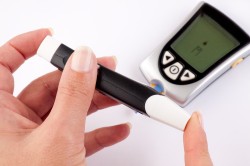There is a LOT OF TALK in the diabetes community especially amongst those with type 1 diabetes about different methods of checking blood glucose levels. We provide a brief outline below on the 4 main approaches.
FIRST, the traditionally finger prick blood glucose monitoring system measures the level of glucose in your blood on one particular occasion. This may help to keep blood glucose levels under control and make adjustments to diet, activity or adjust diabetes medication doses.
- Think of this as a spot check of your watch in order to know what time it is right now
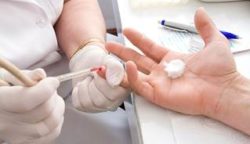 SECONDLY, the laboratory or finger prick test of glycated haemoglobin (HbA1c), provides an overall picture of what the average blood glucose levels have been over the past 10 to 12 weeks. This may help identify if the lifestyle and dietary changes you have made along with medications have succeeded in keeping blood glucose levels under control.
SECONDLY, the laboratory or finger prick test of glycated haemoglobin (HbA1c), provides an overall picture of what the average blood glucose levels have been over the past 10 to 12 weeks. This may help identify if the lifestyle and dietary changes you have made along with medications have succeeded in keeping blood glucose levels under control.
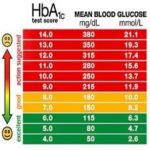
- Think of this as looking back over sales figures and seeing if the new sales and promotional efforts you are making have affected your sales levels
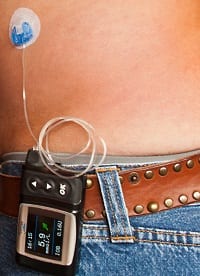 MORE RECENTLY, the continuous glucose monitoring (CGM) devices which consists of a small 3-5 day disposable sensor inserted into the skin which is attached to a transmitter that sends results to a receiver. The wireless transmission is ongoing. This receiver displays the results either real time or you can download the results later. If it is a real-time CGM – you can see what your blood glucose levels are any time you look at the receiver and you can react accordingly. If it is downloadable later, you can see retrospectively what the results were like for each 5 minutes of the day (288 results). CGM helps a person to interpret how much time their glucose levels are at, above or below target but also, at what time of the day blood glucose levels are outside target range.
MORE RECENTLY, the continuous glucose monitoring (CGM) devices which consists of a small 3-5 day disposable sensor inserted into the skin which is attached to a transmitter that sends results to a receiver. The wireless transmission is ongoing. This receiver displays the results either real time or you can download the results later. If it is a real-time CGM – you can see what your blood glucose levels are any time you look at the receiver and you can react accordingly. If it is downloadable later, you can see retrospectively what the results were like for each 5 minutes of the day (288 results). CGM helps a person to interpret how much time their glucose levels are at, above or below target but also, at what time of the day blood glucose levels are outside target range.
- Think of this as knowing at what time of the day, week or month, sales were highest or lowest
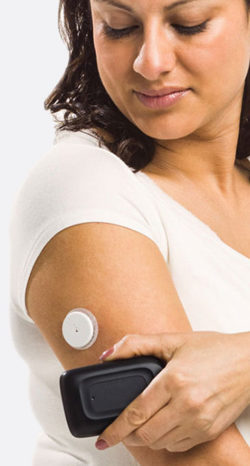 NEW ADVANCES coming to market is flash glucose monitoring which consists of a disposable 14 day sensor inserted into the skin and a wireless touchscreen reader device. You pass the reader over the sensor and it scans the stored results providing a real-time glucose value, a glucose trend arrow, and a trend graph showing the last eight hours.
NEW ADVANCES coming to market is flash glucose monitoring which consists of a disposable 14 day sensor inserted into the skin and a wireless touchscreen reader device. You pass the reader over the sensor and it scans the stored results providing a real-time glucose value, a glucose trend arrow, and a trend graph showing the last eight hours.
This novel graph is known as an ambulatory glucose profile (AGP).
- Think of this as comparing days when you were being very mindful and relaxed with days when you were stressed and less mindful
Obviously, the CGM and AGP are much more beneficial in helping you manage diabetes. Arrows, displaying up and down, denoting the direction of blood sugar changes, provide an early warning, alerting the user when blood sugar levels may be approaching high or low levels. These alerts are useful if you have a drive ahead of us or a presentation to make at work or are heading out to exercise or going to bed. Meals and insulin can be adjusted accordingly. Checking back over trend graphs, you can see how blood sugars were a couple of hours after meals showing the effect of various types of foods or how you reacted to stress or exercise. The next time a similar situation arises, insulin and snack adjustments can be made based on what you learned previously.
However you need the knowledge and capability to know how to protect your health by taking appropriate actions based on your knowledge of current situation and past occurrences. TALK to your medical diabetes team to determine what glucose monitoring system is most appropriate and beneficial for you. Remember, the results are only the start as it is action based on the results that protect YOUR health.


